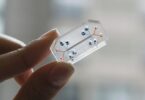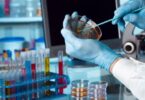A gene is an information unit in a locus of deoxyribonucleic acid (DNA) that codes for a functional product, such as proteins. It is the molecular unit of genetic inheritance, because it stores genetic information and allows it to be transmitted to offspring.
The genes are found in tiny structures similar to spaghetti, which are called “chromosomes.” And chromosomes are found inside our cells. Both chromosomes and genes are made of DNA, an abbreviated form of calling deoxyribonucleic acid.
Researchers have identified more than 4,000 diseases caused by genetic mutations. But the fact that a person has a genetic mutation that can cause a disease or medical condition does not necessarily mean that he or she will develop that disease or condition.
Most likely, on average, everyone will be carrying five to ten mutated or defective genes in each of their cells. Problems arise when the disease gene is dominant or when the mutation affects both copies of the same gene (recessive inheritance). There may also be problems when several genetic variants interact with each other, or with the environment, which increases the susceptibility to develop certain diseases.
Sometimes, those people who are concerned about the possibility of being carriers of mutated genes can undergo genetic tests to know the risk of their children inheriting a certain genetic disease.
In certain cases, scientists intentionally alter genes. For many years, researchers have altered genes in some plants to produce offspring with special characteristics, such as greater resistance to diseases and pests or the ability to grow in difficult environments.
Gene therapy has been developed as a method of approaching the treatment of human diseases based on the transfer of genetic material to the cells of an individual. Usually the purpose of this transfer of genetic material is to restore a cellular function that was abolished or defective, introduce a new function or interfere with an existing function. Thus, the different strategies of gene therapy are based on the combination of three key elements, the genetic material to be transferred, the transfer method and the cell type that will incorporate said genetic material. Initially the focus was on the treatment of monogenic hereditary diseases, but later most of the clinical trials (more than 400) have addressed the treatment of cancer. In China, a genetic product has been approved for commercialization: an adenovirus that transfers the correct version of the p53 tumor suppressor gene. And in the late 1990s, a group of children with severe combined immunodeficiency was successfully treated by transferring ex vivo to cells from their bone marrow the correct version of the altered gene, although some of these children have later developed lymphoproliferative syndromes by the activation of an oncogene in the corrected cells. Human gene therapy is feasible and may be useful, but the tools need to be perfected so that it can become part of the usual therapeutic arsenal.
In gene therapy, researchers try to replace mutated, defective or absent genes with copies of healthy genes so that genes or functional genes take over. Viruses are often used to transport healthy genes into the target cells (affected by the mutation) because many viruses are able to insert their own DNA into these cells.
 But gene therapy also involves some problems. Scientists still do not know what it is that makes each of the genes of the human body. The enormous effort of many scientists, such as those who participate in the Human Genome Project and other related projects, has made it possible to complete the map of the human genome (all the genetic material present in the chromosomes of a human being), but it will take many more years to find out what each gene does and how the different genes interact with each other. In most diseases, scientists still do not know whether or not genes play a role or how they perform it. In addition, there are great difficulties in inserting normal genes into the appropriate cells without causing problems in the rest of the organism.
But gene therapy also involves some problems. Scientists still do not know what it is that makes each of the genes of the human body. The enormous effort of many scientists, such as those who participate in the Human Genome Project and other related projects, has made it possible to complete the map of the human genome (all the genetic material present in the chromosomes of a human being), but it will take many more years to find out what each gene does and how the different genes interact with each other. In most diseases, scientists still do not know whether or not genes play a role or how they perform it. In addition, there are great difficulties in inserting normal genes into the appropriate cells without causing problems in the rest of the organism.
These two biotechnologies are being used in clinical trials for diseases that once were considered non-treatable, but are now considered to be curable someday, which is largely due to these important new tools.
The first gene therapy for commercial use will finally be a reality and the United States plans to approve the first treatment by then. Manufactured by the Novartis pharmaceutical company, it has shown its effectiveness in leukemia patients with a very poor prognosis. In one trial in 12 countries, 83% saw the disease subsiding. A year later, two thirds remained cancer free.
The approval is a new step that brings gene therapy closer to common medical practice. The idea has been in evidence for more than twenty years, but it seems that the technical difficulties are finally being overcome to find the right viruses with which to introduce genetic changes in human cells without causing too serious side effects.
This type of therapies are usually directed to rare diseases and some blood tumors that cause mainly immunodeficiencies, but also problems with red blood cells. Fanconi anemia is a rare disease that affects the stem cells responsible for generating blood cells. People with this deficiency suffer anemia and are more likely to develop leukemia, CIEMAT scientists opinion.
The technique used by the CIEMAT team consists of extracting the stem cells from the patient’s blood, introducing the necessary DNA to repair them once out and injecting them again. “When immunodeficiencies are treated, with a few corrected cells is enough to solve the problem, because they have a selective advantage and end up displacing the defective ones,” explains the scientist.
Recently, UniQure, the company that developed Glybera, the first gene therapy approved in Europe, announced that it would not seek renewal of its permission to sell the drug when it expires soon. The drug corrects a deficiency of lipoprotein lipase, an enzyme necessary to correctly process fat. Those who suffer this evil, experience intense pains in the abdomen. The disease is so rare and the drug so expensive, that since its approval in 2012 has only been used once in a commercial way. It was used to treat a patient in Germany and cost 900,000 euros, which the insurer DAK paid for.
These and other innovations are also possible in Pharmamedic.







